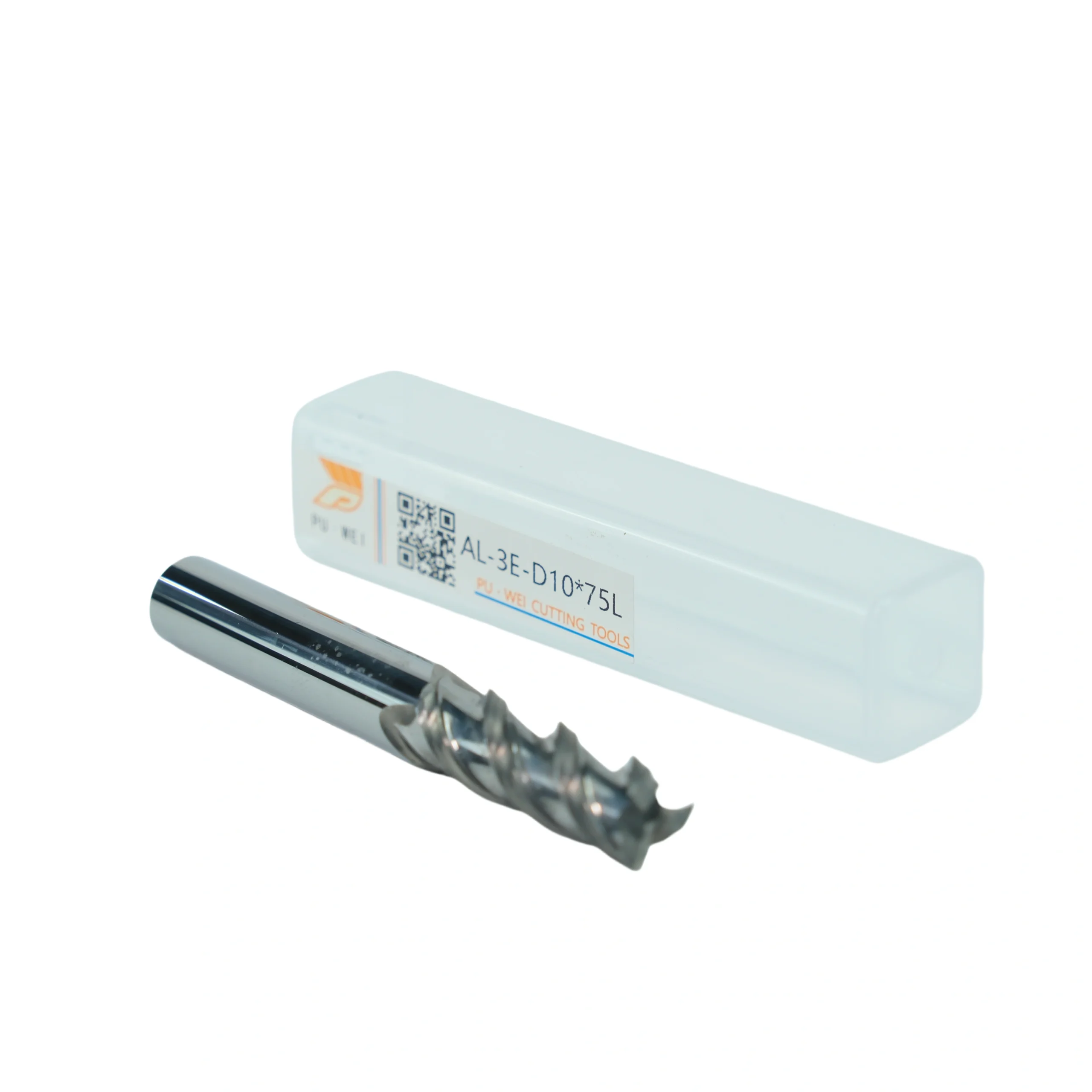As an old cemented carbide manufacturer who deals with the machining shop every day, we are most often tortured by the soul of our customers: “What alloy does this end mill use?” Why don’t other people’s stainless steel blades break?”
Today in plain English, take you through the tungsten carbide end mill material selection door!

First, the core truth: end mill alloy is not “a pot of stew”
The core secret of the carbide end mill is hidden in the material formula. According to the data of our Lizhou cemented carbide supply to 1300+ enterprises, 90% of the tool failures are related to the wrong selection of cemented carbide grades. At present, the mainstream uses these three categories:
1. Tungsten Cobalt alloy (YG series) – aluminum alloy Nemesis
• Typical brand: YG6, YG8 (the number represents cobalt content %) Lizhou cooperation case: Last month, an auto parts factory in Zhejiang Province with YG8 alloy knife processing engine aluminum, cutting speed directly pulled to 300m/min, life than ordinary alloy increased by 40%.
• Application scenario: aluminum alloy, copper alloy and other non-ferrous metals, non-metallic materials (such as carbon fiber, plastic mold)

2. Tungsten cobalt titanium alloy (YT series) – Terminator of steel parts
• Explosive model: YT5, YT15 (the higher the titanium content, the higher the high temperature resistance) Lizhou cooperation case: Guangdong Mold Factory uses YT15 alloy knife to process P20 mold steel, dry for 8 hours without changing the knife, and the surface roughness is stable at Ra0.8
• Exclusive treatment: carbon steel, alloy steel, quenched steel (HRC45 or less)
3. Tungsten titanium tantalum (niobium) alloy (YW series) – all-gold oil player
• Star products: YW1, YW2 (add tantalum/niobium to enhance red hardness) Lizhou cooperation case: Last year to the space plant customized YW2 alloy knife, in the processing of titanium alloy TC4, the anti-collapse edge performance is 3 times stronger than ordinary alloy 5
• All-around fields: stainless steel, heat-resistant alloy, high manganese steel and other difficult materials
2. Material selection and pit avoidance guide: Remember the three iron laws firmly
Lizhou customers recently had a bloody case: a factory in Shandong processed stainless steel with YG6 knives, and the result was that each knife had a life of less than 2 hours. After sale Xiaobian finally view, the problem is in the selection of the wrong alloy type!
Iron law 1: Look at the hardness of the processed object
• HRC < 30: Closed eyes choose YT15, the king of cost performance
• HRC30-50: YW1, impact resistance and wear resistance
• HRC > 50: ultrafine alloy with TaC/NbC must be loaded
Iron Law 2: Look at the cutting temperature
• < 800℃ : normal YG/YT is sufficient
• 800-1000℃ : YW series containing tantalum
• > 1000℃ : must be TiAlN coating + ultrafine alloy 7
Iron Law 3: Look at the rigidity of the machine
• Vintage machine tools: select high cobalt alloys (such as YG8) to cushion the shock
• High speed machining center: precision with low cobalt fine alloy (such as YG6X)
Iv. Vomiting blood advice for purchasing managers
Next time you buy an end mill, bang on the table and ask the supplier these three questions:
1️ What kind of alloy is this knife made of? Are there any test reports?”
1️What is the granularity? 0.5μm or 0.8μm?”
1️Can cobalt content fluctuate within ±0.3%?”
The YG8X alloy recently upgraded by our Lizhou cemented carbide factory has a grain size of 0.6μm, and the tool life of aluminum alloy is directly 50 hours longer than that of ordinary products on the market.

Need to test knife sample, now scan code get free experience pack!
